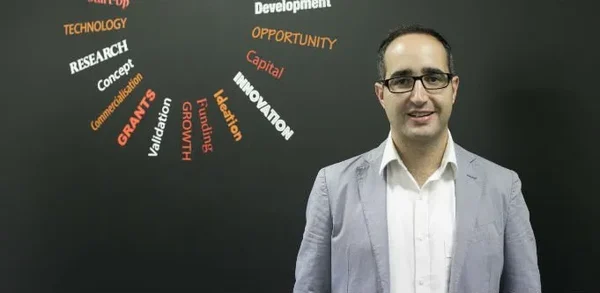As published on in Smartcompany
For entrepreneurs and business owners, there’s a whole host of government grants and rebates available, each bearing the promise of a little breathing space for startup founders, entrepreneurs and small business owners.
But, whether it’s a government grant or a tax incentive, once you’ve established your business is eligible, there’s invariably a process involved in applying for it. In some cases, that process is long. In others, it’s complicated. Usually, it’s both.
According to Gary Shapiro, co-managing director of Rimon Advisory and all-round expert on government funding, grants can be split into two categories: competitive upfront grants; and rebates, or incentive-type grants.
For upfront grants, companies are generally expected to apply before starting a particular project, putting forward a submission and then being assessed against the grant criteria. Even if the business meets the criteria, although sometimes that criteria is niche, it still needs to be the best of the bunch.
There’s a limited amount of money available for these types of grant, Shapiro says.
“You can do a fantastic job in your application, and still get nothing,” he tells StartupSmart.
At a federal level, applicants are competing with others from all over the country, with applicants for things like the Accelerating Commercialisation grants seeing a “very low success rate”.
At a state level, “they’re less competitive because there are fewer people playing,” Shapiro says.
“But there’s also less money available.”
This trend continues to the local government or council level, and to grants issued by industry bodies, which are “not very competitive at all because there are not many projects that reach the criteria”.
For the incentive or rebate grants, such as the R&D tax incentive or the Export Market Development Grants (EMDG) scheme, it’s less about competing with other businesses, and more about going through a compliance process.
“Do you meet the rules? If you do, you get your money,” says Shapiro.
But, both types of grants have their pitfalls, and while there’s no shortage of grants available to startups and small businesses, they each have individual requirements with a lot of room for error.
Speaking to StartupSmart, Shapiro shared four common mistakes businesses make when applying for government grants, and how to avoid falling into the traps.
1. Wasting time on pipe dreams
According to Shapiro, businesses should think carefully about the grant they’re going for, weighing up the time and effort required to apply with the chances of success.
“Consider whether it’s worth your while to go down the process,” he says.
Shapiro says he has known founders to spend hours on an application process and ultimately end up getting nothing. These are “hours and hours that would have been better spent elsewhere”, he says.
Even if a business has the staff to do the leg work, is that the best use of their time? Unless you’re going through that process for another reason, for example in preparation for a capital raise, Shapiro says probably not.
Businesses should be prepared to lose around $30,000 in terms of time and effort, as well as potentially in consultant fees, before they start the process of applying for a government grant.
For startups and early-stage technology companies, there are only a handful of grants available, he says, and these are “even more hotly contested”.
He advises businesses to read information guides to grants carefully, understand what they’re looking for, and assess whether their project fits perfectly within the criteria.
“If not, you really shouldn’t waste your time going for it.”
2. Making silly mistakes
When it comes to government grants, the government has neither the ability nor the inclination to bend the rules, says Shapiro.
However, particularly when applying for the competitive upfront-style grants, silly, seemingly small, errors are common, he says.
Specifically, people miss deadlines, either by not reading them correctly (often there are multiple deadlines for different parts of the application) or by simply submitting late.
Shapiro says he knows of one company that “spent hours and hours on the application, and missed the deadline by a few minutes”.
Another common mistake is for companies to not properly read the information guides provided, in terms of the documentation they have to provide.
For example, when an application requires a statement about financial viability from a registered auditor, a company can mistakenly provide a statement from their own accountant, disqualifying them immediately.
“Provide all the documents they ask for, and the right documents,” Shapiro warns.
“The government can’t bend the rules, even if they want to be compassionate.”
3. Blending in
Government officials receive a lot of applications and it’s important to stand out, and to make their job as easy as possible, says Shapiro.
“If there’s a set of questions, answer them directly,” he recommends.
“Highlight or bold the main points, so someone going through can easily find the right information. Don’t make them try to figure out whether you’ve answered the question.”
It can also help to present the document nicely, perhaps using images to break up the text and illustrate the main points.
“It does seem really basic,” Shapiro says.
“But people forget that.”
To an extent, a grant application is a sales document, and there’s a balance to be struck between providing facts, and selling yourself.
If the language is “over the top and flowery” it can obstruct the key point of the response and “blur what the answers are”, Shapiro says. But on the other hand, “bullet points are not great”.
He compares the process to pitching for venture capital funding, saying: “You need to tell a story. People enjoy reading a story.”
You need a VC to buy into the founder’s vision, and the same applies to a grant application. The difference is that, with the latter, you also need to check all the right boxes.
Shapiro advises companies to first focus on the compliance, making sure you’ve checked all the boxes and provided all the relevant information, and then focus on the story to “make it exciting”.
4. Going it alone
With the rebate-type grants and tax incentives, because they’re legislated, there is often “a lot more compliance”, says Shapiro.
This can be where an expert consultant or advisor can come in, as they know the laws and can guide applicants through the process, he says.
This is particularly pertinent as, even though businesses may be entitled to funds, “if you don’t show how, you can end up with nothing”.
The requirements here are written in law, they’re very strict and they’re audited. There is no wiggle room here. If a contract isn’t worded correctly, or if an application is missing just a tiny bit of information “that can be the difference between getting something and getting nothing”, says Shapiro.
Again, he says it’s just not worth the time it would take, considering the risk that you “could get the whole claim knocked”.
“It consumes a lot of time,” he says.
“You’re likely to make mistakes.”
Shapiro implores businesses to “be sensible about it”.
“Most people go to an accountant to get their tax return done,” he says.
“You’re not an expert in that space, and it’s very complicated.”
Finally, even if a business owner feels qualified and confident to submit their rebate application themself, Shapiro says they should consider: “When you get audits, are you going to be able to stand up to that?”
Audits can take up significant amounts of time, on top of that taken for the original application. Having someone to help with that can be invaluable, he says.


